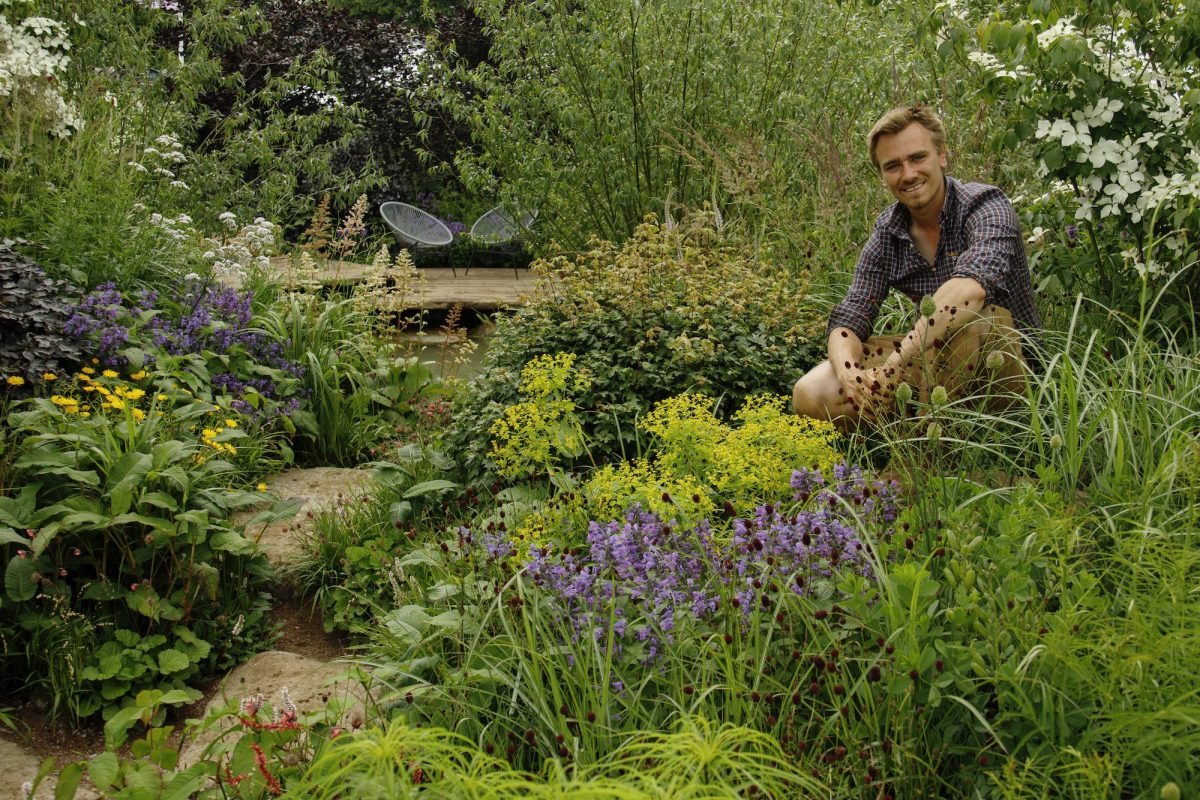The RHS Hampton Court Garden Festival and Climate Change Gardens

In 2019, the show gardens featured climate change, plastic waste, and the environment as its themes. It was fascinating to witness how the designers approached these topics.
When it came to climate change and water, the Thames Water Flourishing Future Garden went all out. Its garden demonstrated the ways our gardens can cope with the drier summers, wetter winters, and unpredictable weather. The features included a contrast of moisture-loving and drought-friendly borders and permeable paving. There was also a rainfall pavilion at the center with gorgeous rain chains directing the water into the wetland.
On the topic of drought, we cannot overlook the garden that celebrated the 2019 RHS Hampton Court Horticultural Hero: Beth Chatto. This garden involved the recreation of her drought-tolerant Essex gravel garden. She made sure to work with the natural environment by designing a plan that took an approach dubbed “right plant, right place.”
Without a doubt, it will be important for gardeners as we come to terms with the changing seasons, heatwaves, and droughts that are sure to come. It will no longer be just about the aesthetics, but it will be important to also consider how well plants cope with these new conditions.

It is not difficult to understand why succulents were so popular that year. After all, they are the first to come to mind when we think of plants that can survive droughts. Everywhere, there were planters, wall displays, and hanging baskets with succulents. Most of them can manage dryness, but certain varieties cannot survive the cold. They have fleshy leaves, which are important for drought survival, that can be damaged by freezing water.
Agaves, aloes, and aeoniums were all popular choices, although they are categorized as half-hardy. They should be relocated somewhere without frost during the winter. On the bright side, many sempervivums and sedums are tough. Since they naturally grow in the mountains, they can withstand below-freezing temperatures.
There were also four kinds of bergenia in the drought-tolerant garden. They were Adendglocken, Bressingham ruby, Ballawley, and Morgenrote. The bergenia had been placed at the front with maximum sun exposure. These plants might be tough, but let us remember that they still require well-drained but moist soil.
Not only were the gardens beautiful, but they also asked us to consider what and how we garden in the future. Things will be different, and we need to choose our plants and planting schemes wisely.
